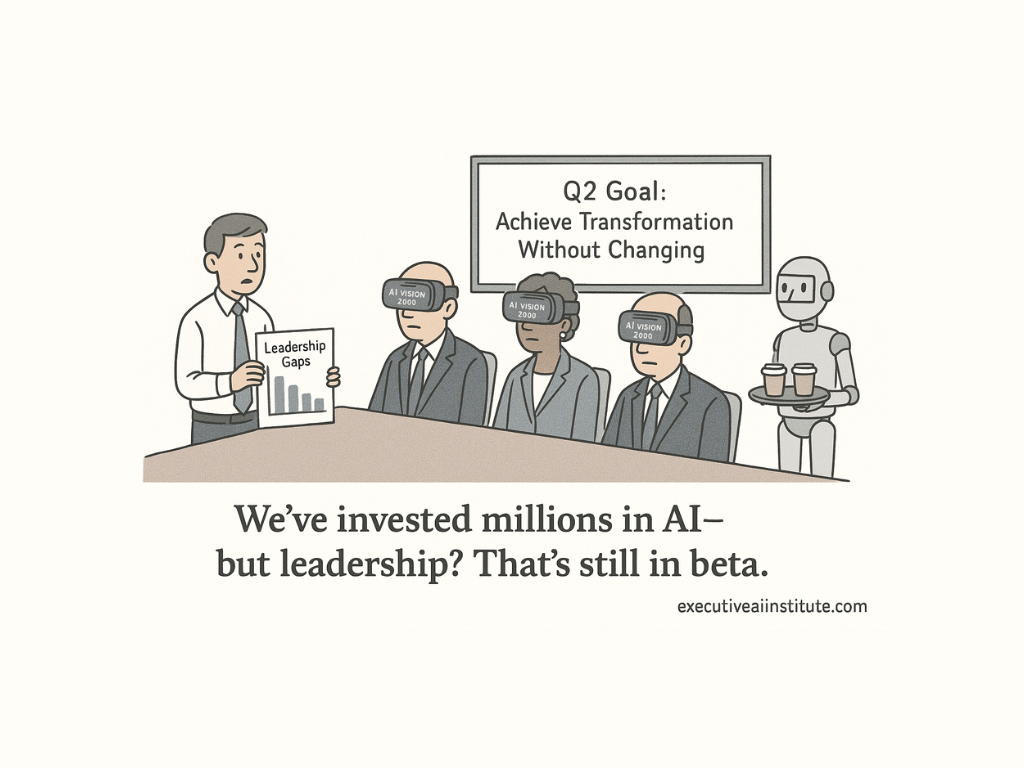As someone who spends my days knee-deep in the world of innovative digital technologies, nothing quite piques my interest like a deep dive into the potential impacts of AI on our economy. OpenAI's recent paper, "GPTs are GPTs: An Early Look at the Labor Market Impact Potential of Large Language Models" provided just that, offering a comprehensive glimpse into how Generative Pretrained Transformers (GPTs) might shake up the labor market. Considering the overlap with my work, I found myself nodding along and connecting the dots.
This paper, quite rightly, emphasises the dual role of GPTs. On one hand, they automate specific tasks, and on the other, they open up an array of opportunities for human skills. This is something I've always emphasized in my workshops. They're not just about teaching; they're about exploring how we can work alongside technology, rather than compete against it.
OpenAI's report brings up the increasing importance of "human-in-the-loop" tasks in the face of growing AI adoption. From my perspective, the high-tech domains of AI, Web3, and the Metaverse I play in require a significant dose of human guidance and oversight.
There's an undeniable truth the report points out - the skills gap in the digital economy. It's something I see all the time. Businesses wrestling with unfamiliar technologies, trying to strike a balance between innovation and keeping the lights on. Often, that's where I step in, is offering a guiding hand through the complexities, turning technology into a friendly ally rather than a perplexing foe.
One point the report makes that really hit home is the need for policy measures to ensure the fair distribution of AI benefits. This idea forms the backbone of my belief in digital economic justice. It's crucial to provide a level playing field for everyone, regardless of their background. The digital age needs to be an equitable one.
If this sounds like something you're grappling with, or if you're simply curious about what these technologies could do for your business, I'd love to hear from you. After all, as Steve Jobs famously said, "People don't know what they want until you show it to them." It's always exciting to open the eyes of individuals, organizations and business leaders to the digital possibilities that lie ahead.
From understanding your business needs, developing, and implementing AI models, to ensuring their smooth operation within your workflows, I am here to help your organization not just survive but thrive in this era of rapid AI advancement. After all, it's not just about understanding the technology but leveraging it to unlock new opportunities, increase productivity, and drive growth.
My comprehensive notes on the paper
Key Findings:
According to the study, a whopping 80% of the U.S. workforce might see at least 10% of their tasks influenced by LLMs. An even more staggering 19% could see 50% of their tasks impacted. The potential reach of LLMs spans across all income brackets, with high-income jobs possibly experiencing a higher degree of exposure.
Around 15% of all worker tasks could be expedited by using LLMs, and this figure skyrockets to between 47-56% when LLM-powered software and tools are incorporated into the mix. The potential for LLMs to shift economic, social, and policy landscapes is significant, given that they are classified as general-purpose technologies.
Jobs such as medical equipment technicians, online merchants, and teachers will face varying degrees of potential LLM exposure. Moreover, the report makes a crucial point: jobs with the least exposure require the most training, offering a lower income payoff. On the other hand, jobs that only require on-the-job training or an internship tend to yield higher incomes but are more exposed to LLMs.
Delving into LLMs and Jobs:
LLMs can be effectively harnessed when integrated into larger systems. Their capabilities extend beyond mere text generation to include custom search applications, summarization, and classification. The report puts forth a new rubric for evaluating the impact of LLMs on jobs, noting that LLM exposure can enhance human labor efficiency.
On Occupational Impacts and Implications:
Most job types exhibit some degree of LLM exposure, with higher wage jobs generally facing more exposure. Occupations relying on science and critical thinking skills show lower exposure, while those involving programming and writing skills show higher exposure. Interestingly, exposure increases with job preparation difficulty, implying that workers with higher entry barriers face more exposure.
On the Advancements and Potential Impact of LLMs:
LLMs, including models like GPT-4 and LaMDA, have made substantial strides in language-based tasks. They have the potential to control other digital tools, thereby enhancing performance across applications. Despite their limitations, LLMs are viewed as versatile building blocks for specialized tools.
When considering Complementary Technologies and Economic Impacts:
Specialized applications can integrate LLMs into workflows, although issues such as inaccuracies, biases, privacy concerns, and disinformation risks may limit the reliability of general-purpose LLMs. Domain-specific expertise can help address these shortcomings. The report anticipates continuous improvement in LLM performance and studies the impacts of AI and automation technologies on the labor market.
Regarding the Relevance of LLMs to the Labor Market:
Automation technologies have led to wage inequality in the U.S., and AI exposure varies within occupations. General-purpose technologies like AI require extensive co-invention and new business procedures to unlock their full potential. To effectively leverage the advantages of machine learning technologies, organizational system redesign may be necessary.
As for Challenges and Limitations:
The study points out that subjectivity in human annotations can lead to biased judgments about LLM reliability and effectiveness. It also cautions that the accurate prediction of future LLM applications is challenging due to emerging capabilities and changes in perception biases and technological development.
Discussing the Impacts and Potential of LLMs in the Economy:
LLMs are improving and can handle complex tasks. Software and digital tools powered by LLMs can revolutionize economic activities. LLM-powered software has more impact on task exposure than LLMs alone.
Talking about Adoption and Implications of Language Models in the Workforce:
The adoption of LLMs in businesses is becoming increasingly widespread. Firm and worker adoption of LLMs is on the rise. Several factors influence this adoption, including trust in LLM outputs, technology costs, flexibility, worker and firm preferences, and ethical and safety risks.
However, the adoption of LLMs varies across sectors due to differences in data availability, regulations, and power dynamics. Interestingly, the study found that time-saving and ease of application may be prioritized over quality improvement. Augmentation may precede full automation, leading to potential job instability. The rise of automation technologies, including LLMs, can increase economic disparity and disrupt labor, thus emphasizing the need for policy preparedness.
Reflecting on the Potential Impact of LLMs on US Workers:
The report highlights that LLMs have exposure across most occupations, with higher-wage jobs having more tasks with high exposure. Around 19% of jobs have at least half their tasks exposed to LLMs, considering current and anticipated LLM-powered software. However, actual labor productivity outcomes will be influenced by social, economic, regulatory, and other factors. As such, further research is needed to understand the broader implications of LLM advancements.
Exploring Tasks and Capabilities of LLM-powered Applications:
LLMs can perform a wide range of tasks, such as automating manual tasks, translating text, summarizing documents, providing feedback, answering and generating questions about documents, assisting with emails, maintaining records, and creating training materials. However, tasks involving hand use or walking, those affecting human livelihood, those requiring human legality, or those not significantly saving time for experienced workers are classified as E0. Critical thinking, active learning, learning strategies, monitoring, and programming are key for the effective use of LLM technologies.
Wrapping things up, LLMs, which encapsulates GPT models, are poking massive ripples in our economy and labor market. It seems they're being embraced more and more each day, holding the promise to make various tasks a breeze through automation. But to reap their benefits, certain tactics are necessary. Mind you, their impact is a mixed bag and can swing wildly depending on the industry they're applied in. Hence, a lot more digging and head-scratching is still required to have a complete grasp of their long-term effects.

%20on%20employment.%20The%20central%20element%20features%20a%20larg.webp)

.png)
